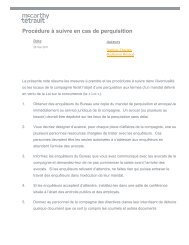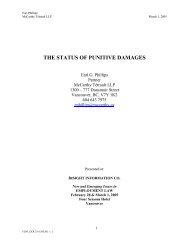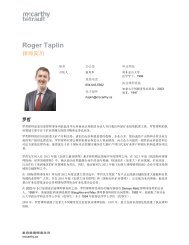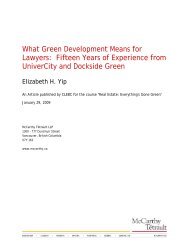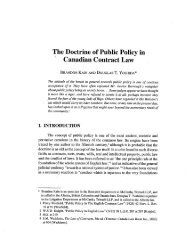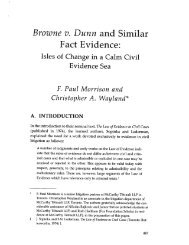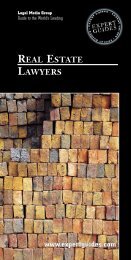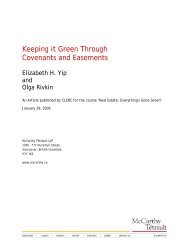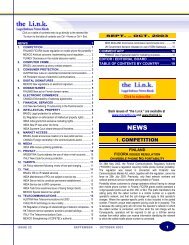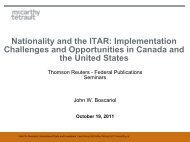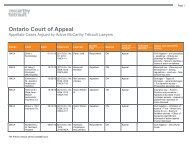Presentation Material - McCarthy Tétrault
Presentation Material - McCarthy Tétrault
Presentation Material - McCarthy Tétrault
Create successful ePaper yourself
Turn your PDF publications into a flip-book with our unique Google optimized e-Paper software.
Chris Falk<br />
Stefanie Morand<br />
<strong>McCarthy</strong> Tétrault LLP<br />
o<br />
the taxpayer, Brother, Canco and Holdco entered into a further agreement<br />
confirming the transactions and providing that on September 1, 2002:<br />
• Canco would pay a final dividend to Holdco equal to Canco’s then<br />
remaining cash balance less all liabilities;<br />
• Holdco would direct that the amounts owed by Canco to Holdco be paid<br />
to Brother as payment of the remaining balance of the Holdco Note, and<br />
Brother would, in turn, direct that such amounts be paid to the taxpayer<br />
as payment of the remaining balance of the Brother Note;<br />
o<br />
the taxpayer crossed the border, moving to the United States;<br />
• on July 15, 2002, Canco paid Holdco $10,000;<br />
• on September 1, 2002, Canco declared a final dividend as contemplated in the June 25,<br />
2002 agreement and Canco booked the amount as being owed to the taxpayer pursuant<br />
to directions from Holdco and Brother.<br />
In completing his tax return for the 2002 taxation year, the taxpayer reported a capital gain on<br />
the disposition of the Canco shares equal to $524,967 39 and applied the Losses to offset the<br />
gain. In 2008, the Minister reassessed the taxpayer to include in his income for the 2002<br />
taxation year a taxable dividend in the amount of $524,967. 40 In so doing, the Minister relied<br />
upon subsection 84(2) and, alternatively, the GAAR in maintaining that the transactions<br />
triggered a deemed dividend to the taxpayer. The Minister also maintained that the transactions<br />
were a sham such that, on this basis as well, the taxpayer received dividends or deemed<br />
dividends.<br />
At trial, the principal issues were whether subsection 84(2) or the GAAR applied to recharacterize<br />
as a dividend the amount received by the taxpayer for the Canco shares. 41,42<br />
Comparables<br />
Before reviewing the Tax Court of Canada’s decision, it is useful to consider the Canadian<br />
income tax consequences that would have arisen under several alternative arrangements.<br />
Had the taxpayer simply sold the shares to an arm’s length party, he would have realized a<br />
capital gain equal to the amount by which his proceeds of disposition exceeded his ACB of<br />
$101; however, the decision reports that there was no market for the shares of Canco, either as<br />
a professional corporation or a holding company.<br />
As noted above, had the taxpayer emigrated from Canada while he still owned the Canco<br />
shares, he would have been deemed to have disposed of the shares on leaving Canada and<br />
39<br />
40<br />
41<br />
42<br />
The amount of the Brother Note less the taxpayer’s ACB of $101.<br />
The Minister also revised the capital gain from $524,967 to $10,000. This revision was consequential upon the<br />
inclusion of the deemed dividend.<br />
The sham basis for the assessment was abandoned at trial.<br />
In the event that the Court were to determine that subsection 84(2) or the GAAR applied, the taxpayer asked the<br />
Court to find that he was not a resident of Canada at the time of any deemed dividends.<br />
560600/422632<br />
MT DOCS 11864055v1G<br />
13



